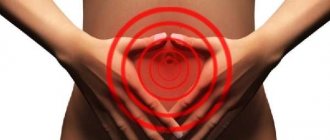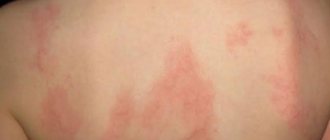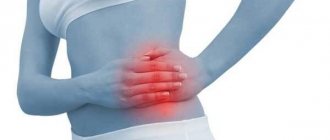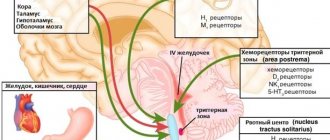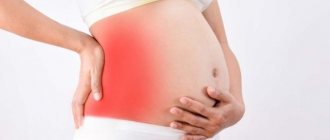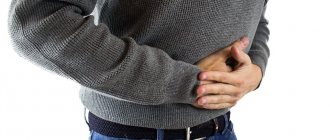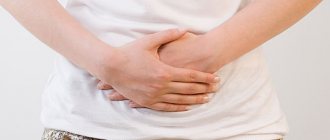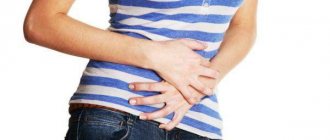Heart pain can be of different types. Patients often complain of stabbing pain. As a rule, they are the ones that give people the most trouble. At the same time, experts believe that stabbing pain in the heart area is not always a sign of diseases of coronary origin. On the contrary, such a symptom is not typical for most life-threatening cardiac pathologies. It is most often observed with lesions of the spine and nervous system.
As a rule, when people complain of a sharp stabbing pain in the heart, they mean sensations in the left side of the chest. Many believe that the main organ is on the left. In fact, the heart is located in the middle of the chest, and cardiac pain is usually felt behind the sternum, although it can also radiate to the left half. It often happens that people mistake sharp, stabbing pains, which are not at all dangerous, for a heart attack. At the same time, they may miss actual heart symptoms or not take them seriously.
Development of acute appendicitis
Acute inflammation of the appendix occurs in every third person who comes with complaints of pain. Usually, when there is a tingling sensation in the lower abdomen, the sensation is sharp.
The pain syndrome is localized on the right side. But the whole process still begins before that. When making sudden movements, the pain radiates to the umbilical region. Many people ignore this symptom. As it develops, the pain drops lower and shifts to the right.
Appendicitis is one of the serious diseases that requires immediate hospitalization of the patient. This disease is accompanied by other symptoms, which include nausea, repeated vomiting mixed with bile, and an increase in temperature up to 39 degrees. In some cases, diarrhea occurs first.
If not treated promptly, appendicitis can develop into a more serious pathology called peritonitis.
Stitching pain in the lower abdomen in children
Children, especially young ones, cannot always describe their sensations accurately, especially when severe pain overtakes them unexpectedly.
A stabbing disease in the lower abdomen is quite common in newborns. This is due to so-called “colic”. Reasons such as non-compliance with the diet by a nursing mother, oxygen entering the intestines, and artificial feeding can cause increased gas production in the baby. The child cannot cope with gases on his own; they fill his intestines and cause severe pain. Usually, the child cries a lot, to the point of hysteria, refuses to eat and cannot sleep.
Stitching pain is especially dangerous when acute abdominal syndrome occurs.
It can be caused by a dangerous inflammatory process or a ruptured appendix. When attempting to palpate the abdomen, the child screams, cries, and struggles, trying to avoid the unpleasant procedure. If the abdomen can be felt, it turns out to be quite tense and swollen. “Acute abdomen” is almost always accompanied by severe vomiting, diarrhea, fever and lack of appetite. If there is any suspicion of acute abdominal syndrome, the child must be hospitalized.
If stabbing pains in the lower abdomen occur frequently but pass quickly, they can be associated with congenital pathology, malnutrition, dysbacteriosis, or the development of chronic diseases of the internal organs of the peritoneum.
https://youtu.be/w7KcE3NOFQ8
Abnormalities during pregnancy
Tingling in the abdomen often occurs in women. Unlike male diseases, stabbing pain is the first sign of pregnancy. During the normal course of pregnancy, the expectant mother may feel a tingling sensation in the lower abdomen on the right or left, it all depends on where the fetus is attached.
If the pain syndrome is acute, then this indicates an ectopic pregnancy. A woman may not be aware of her situation until the very end. In this case, exactly the same symptoms appear as during intrauterine pregnancy. The patient experiences a delay in menstruation, aching pain in the lower abdomen, nausea and even vomiting.
But after a few weeks, a slight tingling sensation develops into severe and unbearable pain. In addition to all this, the woman begins to bleed.
The danger of an ectopic pregnancy is that if you do not consult a doctor in a timely manner, anemia may develop, large blood loss may occur, or a tube may rupture. This pathology requires urgent hospitalization of the patient.
The uterus and its structure
The uterus is a smooth muscle, hollow organ located in the pelvic area, its shape resembles a pear and is intended for bearing a fetus during pregnancy.
Uterus dimensions:
In a previously nulliparous woman, the uterus weighs 50 grams, and after childbirth, this figure increases to 100 grams. during the dormant period - its length does not exceed 7-8 cm, width - 5 cm.
- During gestation, the size of the uterus increases - its walls stretch up to 32 cm, and the hollow organ itself is capable of supporting the weight of the fetus up to 5 kg.
Inflammatory process in the appendages
When the lower abdomen tingles, the problem may lie in the inflammatory process in the appendages.
This problem is familiar only to women. Gradually, a slight tingling sensation develops into severe aching or pulling pain. In addition to all this, the patient complains of severe drowsiness, frequent mood swings and irritability. The woman’s appetite also disappears.
The causes of the inflammatory process in the appendages are:
- spontaneous miscarriage;
- hysteroscopy;
- performing a surgical abortion;
- hypothermia;
- physical stress.
This disease can also lead to complications. The most important of them include infertility, blood poisoning and death.
Drug therapy
Physiotherapeutic treatment has a good effect. It is aimed at eliminating unpleasant sensations.
These include:
- administering medication using current (electrophoresis);
- healing by applying mud to sore spots;
- acupuncture;
- diadynamic currents;
- magnetotherapy.
Massage is an excellent way to relieve the patient's condition.
What causes of tingling in the body are an indication for taking medications?
Tingling throughout the body like needles (the causes are determined during diagnosis) in cases of impaired conduction through the nerves is treated with medications.
For this purpose the following drugs are prescribed:
- B vitamins - it is more advisable to use them in the form of injections, this is necessary for their rapid entry into the bloodstream;
- antiplatelet agents that promote better blood circulation in the body;
- antioxidants that improve metabolic processes in tissues.
It is strictly prohibited to start taking pharmaceutical drugs on your own. Only after being prescribed by a qualified doctor should a course of treatment be carried out.
He may prescribe the following medications:
- antihistamines - if there is irritating itching, severe burning;
- local products with a cooling effect;
- sedatives – for nervous disorders.
Unpleasant feelings in the hands are eliminated by anti-inflammatory drugs or those that improve blood circulation.
Names of medications, instructions for use
Tingling all over the body like needles (the reasons can only be determined by a doctor, since self-diagnosis can lead to incorrect treatment and complications in the future) is eliminated with vitamins, medications that reduce blood viscosity, and antioxidants.
These medications include:
| Name | Purpose |
| Piracetam | Nootropic drug. Positively affects metabolic processes and improves blood circulation. The daily dose (2.4–4.8 ml) is divided into 2–3 doses. |
| Nootropil | Used to improve motor and mental activity. Available in the form of tablets, capsules and liquid for injection. |
| Mexidol | Used orally at 125–250 mg three times a day. Do not use if you have an allergic reaction. |
| Magne B6 | Cannot be used in severe renal failure. Take 1 tablet 3 times a day. |
| Actovegin | Available in the form of ointments, creams, solution for injections, tablets. Reduces oxygen starvation of tissues. The dosage depends on the indications. |
Crohn's disease
Pulling in the lower abdomen on the right can occur with Crohn's disease. This type of disease is considered dangerous not only for women, but also for men. The symptoms of the disease are similar to acute appendicitis. Only in this case is damage to the intestinal tract observed.
Crohn's disease begins with periodic bouts of diarrhea. Gradually, the patient notices problems in the immune system. Food is often rejected because it is perceived as a foreign body.
It is impossible to completely recover from the disease. But in order for the symptoms of the disease to subside, doctors prescribe a number of medications and adherence to a strict diet.
How does it manifest?
The first description of a headache appeared about 5 thousand years ago. The stabbing pain is sometimes compared to being struck by lightning or being pricked by a piece of ice. As a rule, it is sharp, sharp, piercing. This condition most often occurs in adults, but 3% of such problems are recorded in children.
In most cases, the pain is felt within 1 second, sometimes the attack lasts up to 10 seconds. There may be one “prick” or a whole series of “pricks”. The frequency of occurrence of painful sensations ranges from several hours to several days.
Most often, painful sensations are localized at one point:
- in the temporal region;
- in the area of the eye sockets;
- at the top of the head;
- in the back of the head;
- in the forehead area;
- behind the ear.
The injections may move from point to point within one half of the head or appear on the other side.
Diverticulitis in the intestinal canal
Stitching pain in the lower abdomen may indicate the development of diverticulitis in the intestines.
The symptoms of the disease resemble appendicitis. The only distinguishing feature is constipation. The causes of the pathological process may be poor nutrition or hereditary predisposition, impaired blood outflow or increased intra-abdominal pressure.
Diverticulitis is dangerous because suppuration or fistulas can form on the intestinal walls.
Passage of sand through the ureter
Short description
The passage of sand through the ureter occurs with urolithiasis of the kidneys. The main prerequisite for the formation of stones is changes in metabolism. As a result, salts are formed that cannot dissolve. From these salts, stones (oxalates, urates) are subsequently formed. For diagnosis and treatment, you should consult a urologist.
Localization of pain
As sand passes through the ureter, as the sand migrates, the pain goes from the lumbar to the groin area, moves to the lower abdomen and even to the medial side of the thigh. The strength of pain increases with physical activity and changes in body position in space.
Urinary tract diseases
Very often the lower abdomen hurts due to diseases in the urinary tract. More often, the pathology is diagnosed in men. Tingling in the abdomen is accompanied by itching, burning, frequent urge to urinate, and fever.
If left untreated, blood may appear in the urine. In this case, the reasons can be anything: poor nutrition, alcohol abuse, excess ascorbic acid in the body. The disease can become complicated and develop into chronic pyelonephritis.
When should you see a doctor?
Regarding the question of when to visit a doctor, doctors unanimously say that if there is a deviation from the norm:
- When tingling in the uterus bothers you for more than a day,
- Bloody or purulent vaginal discharge appears,
- Body temperature rises and chills bother you.
This is especially true for pregnant women, when any change in the body and negative impact can provoke spontaneous miscarriage, intrauterine fetal death and premature birth.
Timely assistance from doctors and the attention of specialists, taking prompt measures will help preserve the life and health of mother and child.
In all other respects, the main thing is to follow the doctor’s instructions and lead a healthy lifestyle, which will have a beneficial effect on the entire body, the health of the woman and her future children.
